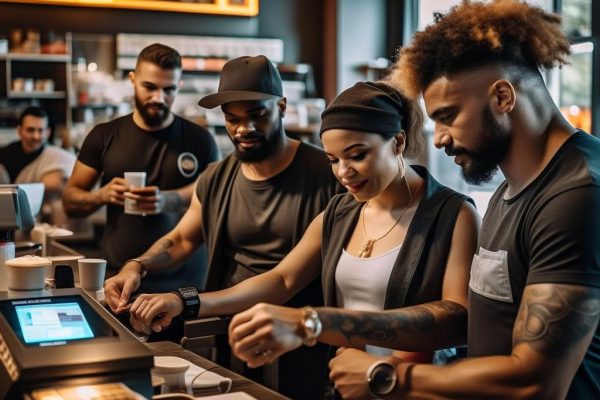In the intricate world of Forex trading, two terms often stand out as the linchpins of successful trading strategies: pips and lot sizes. Pips, or “percentage in point,” serve as the heartbeat of the market, indicating the smallest price movement a currency pair can make. On the other hand, lot sizes determine the volume of a trade, influencing both potential gains and risks. Together, they form the foundation upon which traders can calculate potential profits and strategize their moves. But beyond the numbers, understanding these concepts is crucial for effective risk management. As the saying goes, “It’s not about the money you make, but the money you keep.” By mastering the interplay between pips and the lot size in forex, traders can navigate the volatile waters of the market with greater confidence and precision.
What are Pips in Forex Trading?
In the vast lexicon of Forex trading, the term “pip” frequently emerges as a fundamental concept. But what exactly is a pip? At its core, a pip stands for “percentage in point” or “price interest point.” It signifies the smallest measurable price movement that a currency pair can experience in the forex market. To put it in perspective, while a dollar might be divided into cents, currency pairs in the forex market are typically quoted to four decimal places, and a pip is that last decimal place. For instance, if the EUR/USD pair moves from 1.1050 to 1.1051, that 0.0001 rise is a single pip movement.
The significance of pips in forex trading cannot be understated. They are the yardstick by which traders measure their wins and losses. Every pip movement can represent potential profit or loss, depending on the direction of a trade. By understanding and tracking these minute shifts, traders can make informed decisions, optimizing their strategies for the ever-fluctuating forex market landscape.
The Mathematical Side: Calculating Pip Values
While understanding the conceptual side of pips is crucial, the real magic lies in the mathematics behind it. Calculating the value of a pip is an essential skill for any forex trader, as it directly impacts potential profits and losses. So, how do we determine the value of a pip?
The formula to calculate pip value is relatively straightforward:
Pip Value=Pip in decimal places×Exchange Rate×Lot Size
Let’s break this down with an example from our dataset. Suppose you’re trading the EUR/USD currency pair, and the current exchange rate is 1.1800. If you have a position size of 0.1 lots (also known as a mini lot) and considering that the pip value is in the fourth decimal place, the calculation would be:
\text{Pip Value} = 0.0001 \times 1.1800 \times 0.1 = $0.0118
This means that for every pip movement in the EUR/USD pair, with a position size of 0.1 lots, you would either gain or lose approximately $0.0118, contingent on the trade’s direction.
Grasping this calculation is pivotal for traders. It not only helps in gauging potential profits or losses but also aids in effective risk management. By mastering the art of calculating pip values, traders can make more informed decisions, optimizing their positions based on the ever-changing dynamics of their chosen currency pair.
Understanding Lot Sizes: Standard, Mini, and Micro
In the realm of forex trading, the term ‘lot size’ is as pivotal as the currency pair itself. Essentially, lot size refers to the volume or quantity of a trade, determining the magnitude of the position you’re taking in the market. But not all lot sizes are created equal. There are three primary types to be aware of: standard, mini, and micro.
- Standard Lot: This is the behemoth of lot sizes, representing 100,000 units of the base currency. For instance, if you’re trading the EUR/USD pair, a standard lot would equate to €100,000. Given its size, trading with standard lots typically requires a substantial capital base and is often favored by institutional traders or those with significant risk tolerance.
- Mini Lot: A step down from the standard, a mini lot corresponds to 10,000 units of the base currency. It offers traders the opportunity to participate in the market with less capital compared to a standard lot, making it a popular choice among individual retail traders.
- Micro Lot: The smallest of the trio, a micro lot represents just 1,000 units of the base currency. It’s an excellent option for beginners or those looking to practice their strategies with minimal risk.
The significance of understanding these lot sizes in forex trading is paramount. They directly influence potential profits, losses, and, most importantly, risk. By selecting the appropriate lot size, traders can tailor their strategies to their financial goals and risk appetite, ensuring a more tailored and strategic approach to the dynamic world of forex trading.
The Interplay between Pips and Lot Sizes
In the intricate dance of forex trading, pips and lot sizes move in tandem, each influencing the outcome of a trade. While pips measure the smallest price movement, lot sizes determine the volume of the trade. Together, they form a dynamic duo that dictates potential profits or losses.
Imagine pips as the steps in a dance and lot sizes as the intensity of those steps. A small step (pip movement) with high intensity (large lot size) can have a significant impact, just as a large step with low intensity might. The product of the pip movement and the lot size gives us the trade’s financial outcome.
For instance, a 10-pip movement might seem insignificant. However, when trading with a standard lot, that minor shift can translate to a substantial profit or loss. Conversely, the same 10-pip movement with a micro lot might result in a much smaller financial impact.
In essence, the interplay between pips and lot sizes is a balancing act. Traders must weigh the potential rewards of larger lot sizes against the risks of significant pip movements. By understanding this relationship, traders can fine-tune their strategies, optimizing for desired outcomes while mitigating potential risks.
Real-World Application: Calculating Potential Gains
The theoretical understanding of pips and lot sizes is one thing, but applying this knowledge in real-world trading scenarios is where the rubber meets the road. Let’s delve into a practical example from our dataset to illustrate how potential gains are calculated using pip values and lot sizes.
Imagine you’re trading the EUR/USD currency pair. The current exchange rate stands at 1.1800. You decide to take a position with a size of 0.1 lots, commonly referred to as a mini lot. Now, let’s say the pip value, calculated to the fourth decimal place, results in a value of $0.0118.
If during your trade, the EUR/USD pair experiences a movement of 50 pips in your favor, the potential gain can be calculated as:
Potential Gain=Pip Movement×Pip Value×Lot Size\text{Potential Gain} = 50 \times $0.0118 \times 0.1 = $5.90
This means that a 50-pip movement, when trading with a mini lot, would result in a profit of $5.90. It’s evident from this example that even minor pip movements can lead to tangible gains when combined with the right lot size.
Such calculations are not just academic exercises; they are the backbone of every trading decision in the forex market. By understanding how to calculate potential gains (or losses), traders can set realistic profit targets, manage their risks effectively, and make informed decisions that align with their financial goals.
In the volatile world of forex trading, where market conditions can change in the blink of an eye, having a firm grasp on these calculations can be the difference between a successful trade and a missed opportunity.
Risk Management: The Unsung Hero
In the exhilarating world of forex trading, where the allure of potential profits often takes center stage, there lies an unsung hero working behind the scenes: risk management. While the thrill of a successful trade is undeniable, it’s the ability to manage and mitigate risks that often determines a trader’s longevity and success in the market.
Risk management is the art and science of understanding, evaluating, and taking steps to reduce or control the potential losses in a trade. It’s about making informed decisions, not just based on potential profits, but also on what one stands to lose. And this is where the understanding of pips and lot sizes becomes invaluable.
By comprehending the value of each pip movement in relation to the chosen lot size, traders can gauge the potential downside of a trade. For instance, if a trader knows that a 10-pip movement against their position would result in a certain loss, they can set stop-loss orders accordingly, ensuring that trades are automatically closed before losses exceed a predetermined amount.
Moreover, by adjusting position sizes based on the desired risk level, traders can tailor their exposure to market volatility. Opting for smaller lot sizes in highly volatile markets can be a prudent decision, reducing potential losses.
In conclusion, while the glitz and glamour of forex trading often revolve around profits, it’s the robust risk management strategies, underpinned by a solid understanding of pips and lot sizes, that truly set successful traders apart.
Conclusion
As we navigate the intricate maze of forex trading, two guiding lights consistently emerge: pips and lot sizes. These seemingly simple concepts form the bedrock of successful trading strategies, offering traders a lens through which they can gauge potential profits and manage risks. Pips, as the smallest unit of price movement, and lot sizes, determining the volume of trades, work in tandem to shape the financial outcomes of each trading decision.
But beyond the numbers, it’s the application of this knowledge that truly matters. From calculating potential gains to crafting robust risk management strategies, understanding the interplay between pips and lot sizes is paramount. As traders, our journey in the forex market is one of continuous learning and adaptation. And as we conclude our exploration, it becomes evident that mastering the nuances of pips and lot sizes is not just beneficial—it’s essential for informed decision-making and long-term success in forex trading.
FAQs
What’s a pip in crypto trading?
Hey there! In the forex world, a pip is the smallest price move a currency pair can make. In crypto, it’s similar, but we often refer to it as a “sat” or “Satoshi” for Bitcoin. Keep those charts zoomed in!
How does lot size impact my potential gains?
Great question! Think of lot size as the volume of your trade. The bigger the lot, the more you stand to gain (or lose). It’s like trading with a bigger stack. Always manage that risk, buddy!
Can I use standard lot sizes in all crypto trades?
Ah, the nuances of crypto! While forex has standard lot sizes, crypto exchanges often use different lot sizes. Always double-check the specs on your chosen platform. Happy trading!
How do I calculate potential profit using pips?
Simple math, my friend! Multiply the pip movement by the lot size. So, if Bitcoin moves 100 sats and you’re trading 1 BTC, that’s a 0.001 BTC gain. Keep those calculators handy!
Are pips and percentage gains the same?
Not quite! Pips give you the raw movement, while percentage gains factor in your initial investment. It’s like comparing apples to, well, satoshis. Always know your metrics!





